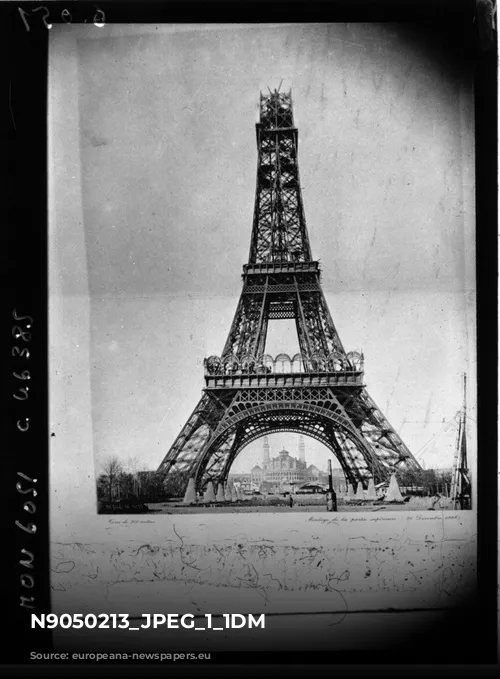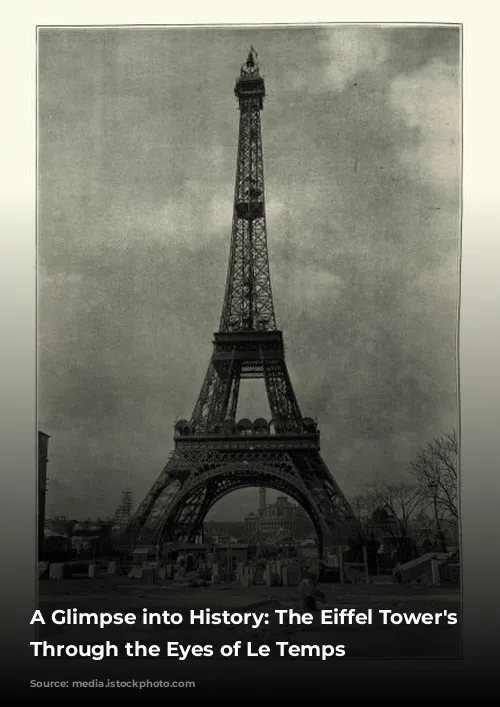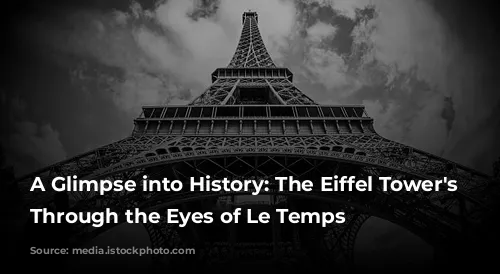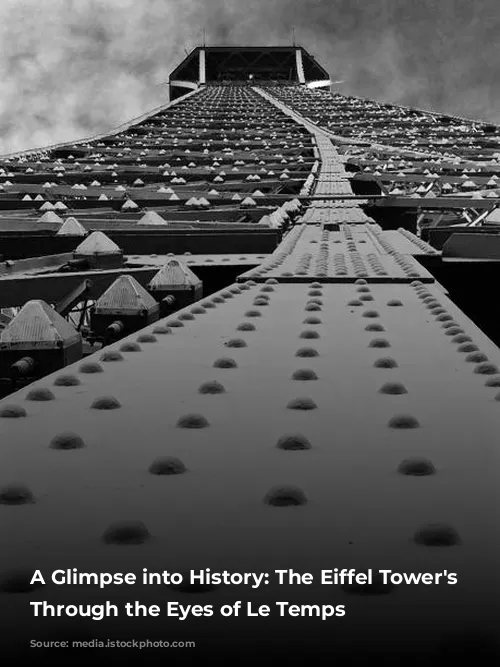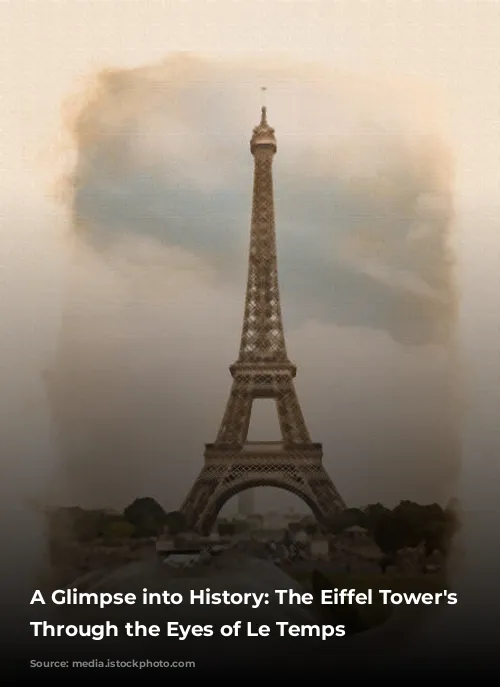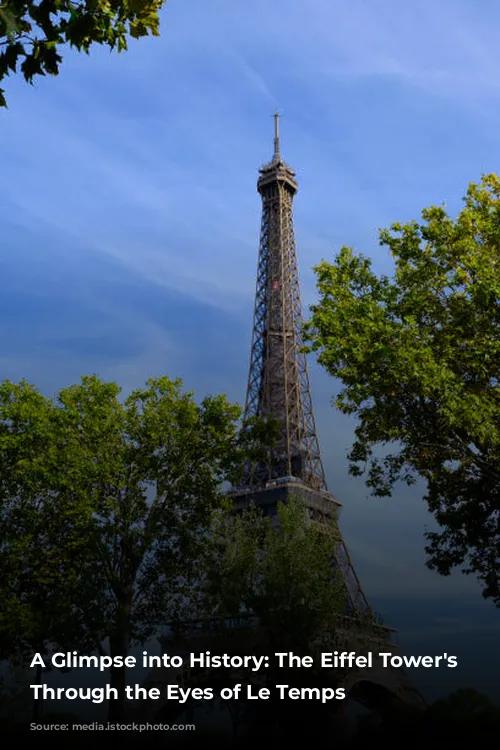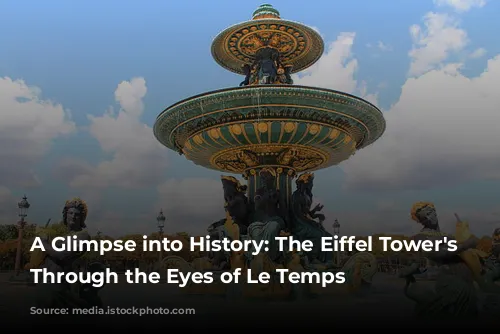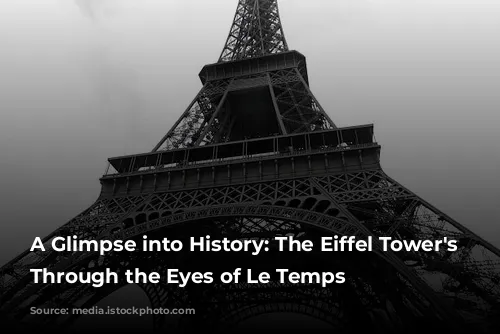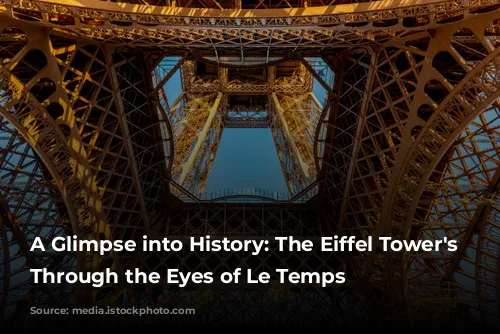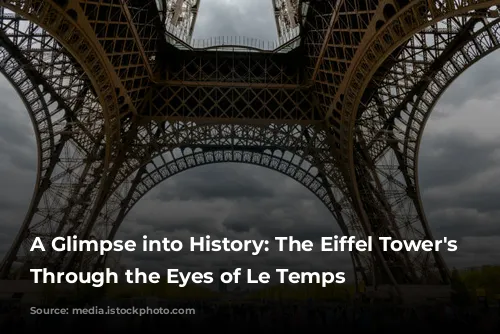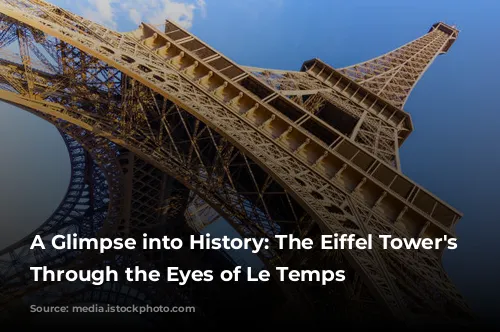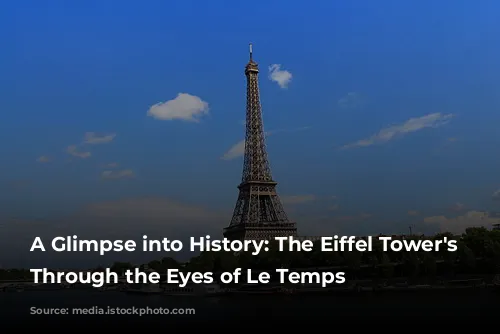Imagine a bustling Paris in 1889, preparing to host the world for the upcoming World’s Fair. The city’s skyline was transforming, with the Eiffel Tower rising majestically as the grand entrance arch to the fair. This monumental project was meticulously documented by newspapers of the time, offering a unique window into how people viewed this engineering marvel.
One such newspaper, Le Temps, a prominent daily publication during the French Third Republic, provides valuable insights into the construction of the Eiffel Tower. In its regular feature, “Chronicle of the Exhibition,” Le Temps kept its readers informed about the progress of the fair preparations.
A particular article, “The Completion of the Eiffel Tower,” published in 1889, paints a vivid picture of the public’s perspective. The article, featured on the second page of the four-page newspaper, focuses on the human element behind the Tower’s construction.
The article doesn’t just highlight the official guests at the Tower’s opening, but instead emphasizes Gustave Eiffel’s gratitude towards the dedicated workers who brought his vision to life. This focus on the human element reflects the importance placed on the workers’ contributions and their national pride.
This article also reveals the political undercurrents of the time. The French President Jules Grévy didn’t choose 1889 to host the World’s Fair by chance. It was a strategic move to celebrate the centenary of the French Revolution and showcase France’s advancements on the world stage.
The Tower’s inauguration was a symbolic moment. The French flag, adorning the structure, represented not only national pride but also the achievements made in science and progress. This event also served to strengthen the identity of the young Third Republic, highlighting the unity and national pride felt by the construction workers.
Looking back in time, we see that opinions about the Eiffel Tower weren’t always positive. Early articles in Le Temps reveal that two years before its opening, many prominent figures, including artists, writers, and intellectuals, expressed their disapproval. They feared it would be an ugly and purposeless structure.
A petition signed by renowned names like Meissonier, Gounod, and Zola, published in Le Temps on February 14, 1887, aimed to halt its construction. Ironically, today, the Eiffel Tower is a global icon, one of the most visited and admired monuments in the world.
Thanks to Josephine Renard of the National Library of France, we are able to glimpse into this historical moment. The Library’s Newspaper Browser offers a vast collection of historic newspapers, providing a valuable resource for exploring the past. With over 300,000 French newspapers currently accessible, and a projected total of 18 million from across Europe, the browser offers a unique opportunity to delve into the history of our world.
